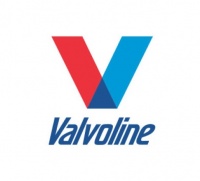S&P Assigns' BB' Rating to Valvoline (VVV) Following Completed IPO

Get Alerts VVV Hot Sheet
Overall Analyst Rating:
NEUTRAL (
 Up)
Up)Dividend Yield: 1.5%
Revenue Growth %: +13.1%
Join SI Premium – FREE
S&P Global Ratings assigned its 'BB' corporate credit rating on Valvoline Inc. (NYSE: VVV). The outlook is stable.
We also assigned a 'BBB-' rating to the company's $1.325 billion senior secured bank credit facility due 2021, consisting of a $450 million revolving credit facility and $875 million ($375 million outstanding) term loan. The recovery rating is '1', indicating that creditors could expect very high (90% to 100%) recovery in the event of a payment default. At the same time, we assigned our 'BB' rating to the company's $375 million 5.5% senior unsecured notes due 2024. The recovery rating is '4', indicating that creditors could expect average (at the low end of the 30% to 50% range) recovery in the event of a payment default. Debt outstanding pro forma for Valvoline's recent IPO and term loan pay down is about $750 million.
We assigned a 'BB-' (prelim) rating on July 13, 2016, and are assigning our final rating of 'BB' following the occurrence of several previously specified events.
"The rating on Valvoline reflects the completion of its IPO and subsequent debt reduction, specifically the pay down of its term loan facility to $375 million from $875 million, lowering total pro forma funded debt to $750 million from $1.25 billion, and strengthening credit ratios, including adjusted FFO to debt to about 20% and adjusted debt to EBITDA to the low-3x area," said credit analyst Gerald Phelan. "Included in our adjusted debt figure is estimated after tax pension and other postretirement benefit liabilities of about $615 million."
The stable outlook reflects our expectation that over the next year the company will successfully transition to a stand-alone company following its separation from Ashland. We expect the company will remain committed to maintaining appropriate financial policies and credit measures for the current rating. Specifically, we expect the company to maintain FFO to debt at or above 20%. Our base-case forecast assumes modest annual EBITDA growth, as higher margin synthetic products more than offset slow declines in the DIY market.
Upside Scenario
We could raise the ratings over the next year if we forecast FFO to debt will strengthen to well above 25% on a sustainable basis, potentially as a result of moderate economic growth in the U.S. combined with stable oil prices, which would support increased driving and demand for lubricants. Based on our forecast, this could occur if FFO improves by 15% and debt is reduced by about $200 million. Before considering a higher rating, we would also need to gain more clarity that financial policies would remain supportive of maintaining credit metrics at these levels.
Downside Scenario
We could lower the ratings over the next year if we project FFO to debt will decline to well below 20% on a sustained basis, potentially because of lower demand for the company's lubricant products. This may be the result of motorists driving fewer miles or competition from larger players in the space intensifying or if there are unexpected operating missteps following the separation from Ashland or a higher postretirement benefit underfunding potentially due to reduced discount rates. We could also lower the ratings if we believe future financial policy decisions will become more aggressive, most likely through debt-financed share repurchases or acquisitions in the oil change service business. We estimate this could result if adjusted debt increases by about $200 million or FFO falls by 10% to 15%.
Serious News for Serious Traders! Try StreetInsider.com Premium Free!
You May Also Be Interested In
- Valvoline Inc. to Report Financial Results for Second Quarter 2024 and Host Webcast on May 8
- Stifel Downgrades Knight Transportation (KNX) to Hold
- Morgan Stanley Downgrades Envista Holdings Corp. (NVST) to Equalweight
Create E-mail Alert Related Categories
Credit RatingsRelated Entities
Standard & Poor's, IPOSign up for StreetInsider Free!
Receive full access to all new and archived articles, unlimited portfolio tracking, e-mail alerts, custom newswires and RSS feeds - and more!



 Tweet
Tweet Share
Share